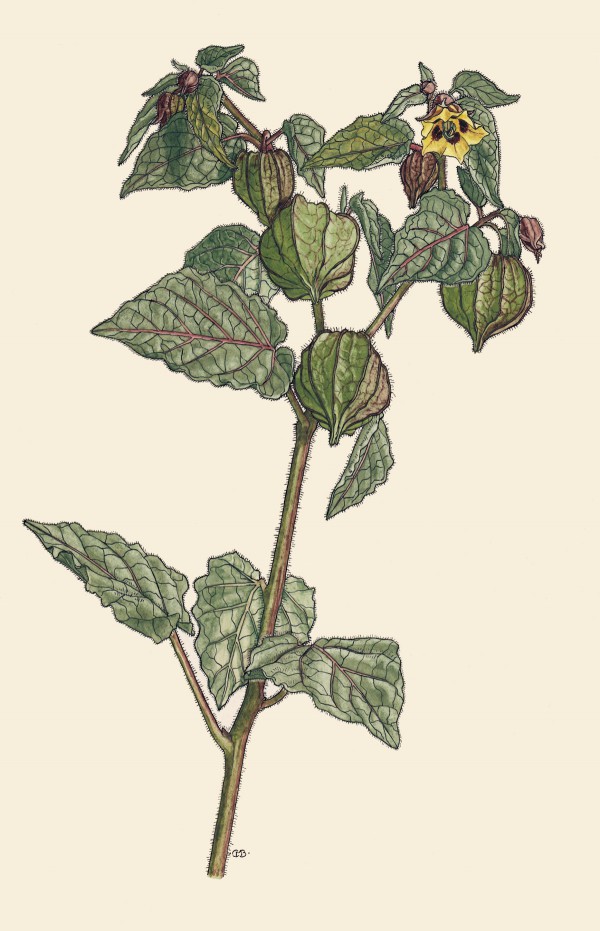Physalis peruviana L. - Solanaceae - Cape gooseberry, Kapstachelbeere, Andenkirsche
Perennial herb, 0.5-2m tall, native to South Africa, naturalized in South America, cultivated worldwide.
„The volatile constituents of cape gooseberry (Physalis peruviana L.) were characterized using liquid/liquid extraction and fractionation of the flavour concentrates on silica gel, followed by high resolution gas chromatography and coupled gas chromatography — mass spectrometry. Sniffing gas chromatography of serially diluted flavour extracts showed methyl 2-methylbutyrate, 4-hydroxy-2,5-dimethyl-3(2H)-furanone and its 4-methoxy derivative, 4- and 5-octanolide, β-ionone, and β-damascenone to be impact components. The non-volatile flavour fraction contained glucose, fructose, sucrose, citric acid, and smaller amounts of organic aliphatic and benzoic acids. The bound forms of volatiles were dominated by benzyl alcohol, 2-methylpropanol, and 2-methyl-butanol. The presence of significant amounts of activated acyl moieties in the fruit was indirectly concluded from various data.“
[The flavour of cape gooseberry (Physalis peruviana L.), Berger, R. G., Drawert, F., Kollmannsberger, H. Zeitschrift für Lebensmittel-Untersuchung und Forschung, Vol.188(2), 1989, 122-126]
„Cape gooseberry (Physalis peruviana L.) is a cherry-sized, yellow-fleshed intriguing berry which was originally cultivated in the Andes. The round orange fruit is loosely enclosed in a papery husk which provides a natural wrapper for storing the fruit, as long as it is kept dry… In addition to being
canned whole and preserved as jam, the Cape gooseberry is made into sauce, used in pies, puddings, chutneys, and ice cream, and eaten fresh in fruit salads and fruit cocktails. In Colombia, the fruits are stewed with honey and eaten as dessert.“
Major volatile components of ripe cape gooseberry fruit pulp (HS-SPME) were hexanol (6.8%), 1,8-cineole (6.6%), ethyl butanoate (6.4%), ethyl octanoate (4.0%), ethyl decanoate (3.3%), 4-terpineol (3.2%), 2-methyl butanol (3.1%), benzaldehyde (2.9%), butanol (2.5%), dimethylvinylcarbinol (2.2%), 2-methylbutyl acetate (2.1%), butyl butanoate (2.1%), and benzyl alcohol (2.0%). Among the minor components were e.g. rose oxide (0.13%), δ-octalactone (0.59%), and β-ionone (0.19%).
[Yilmaztekin, Murat. „Analysis of volatile components of cape gooseberry (Physalis peruviana L.) grown in Turkey by HS-SPME and GC-MS.“ The Scientific World Journal 2014 (2014)] http://downloads.hindawi.com/journals/tswj/2014/796097.pdf

Barnas-Pomeroy, M., Barnas, C.F.J., Wildflowers and landscapes of Ecuador - The way we knew it, fasicle P, t.26 (2014)
http://plantgenera.org/species.php?id_species=787587
Physalis peruviana fruits close up
CC BY-SA 3.0, author 3268zauber Wikimedia Commons
